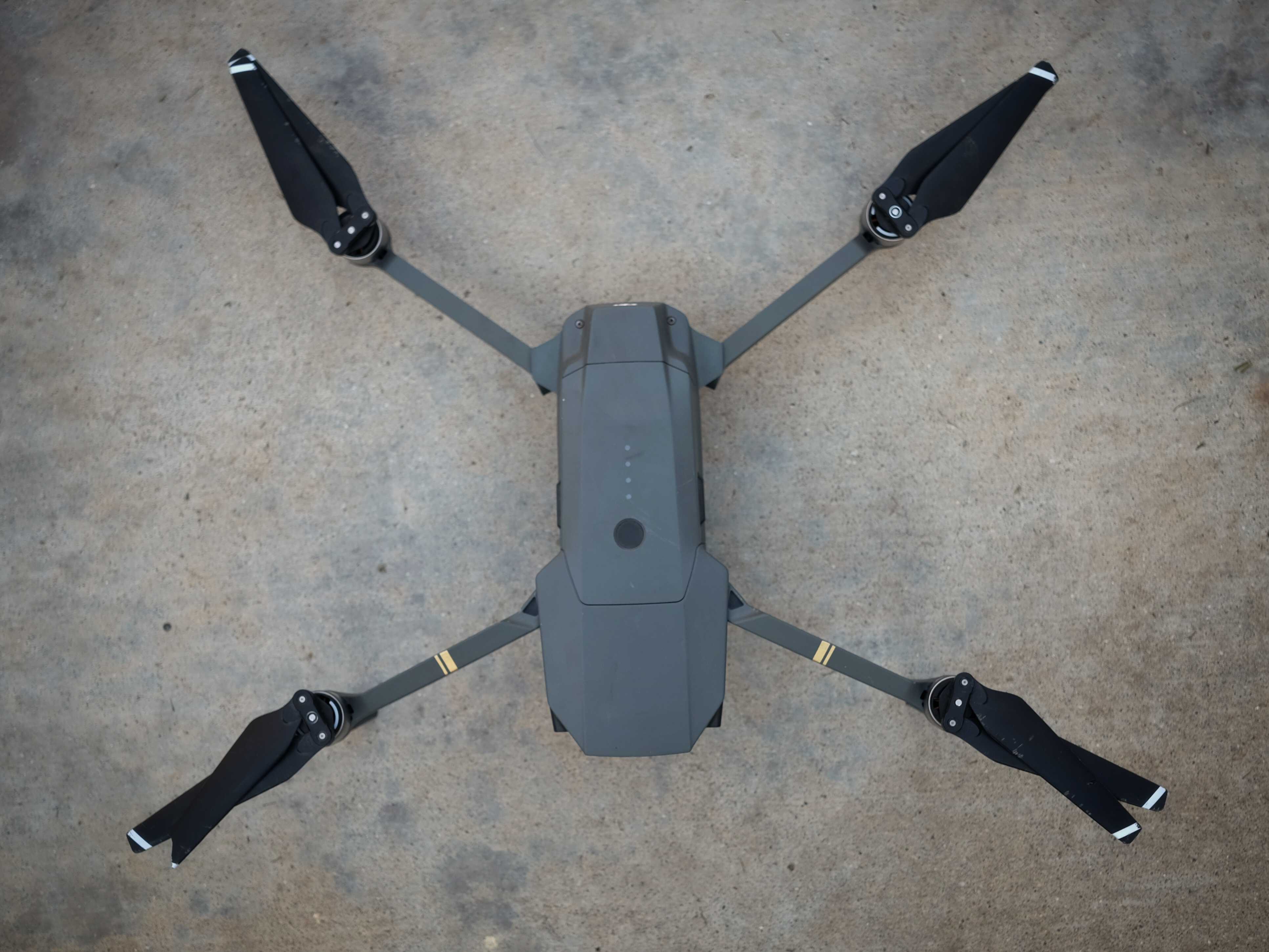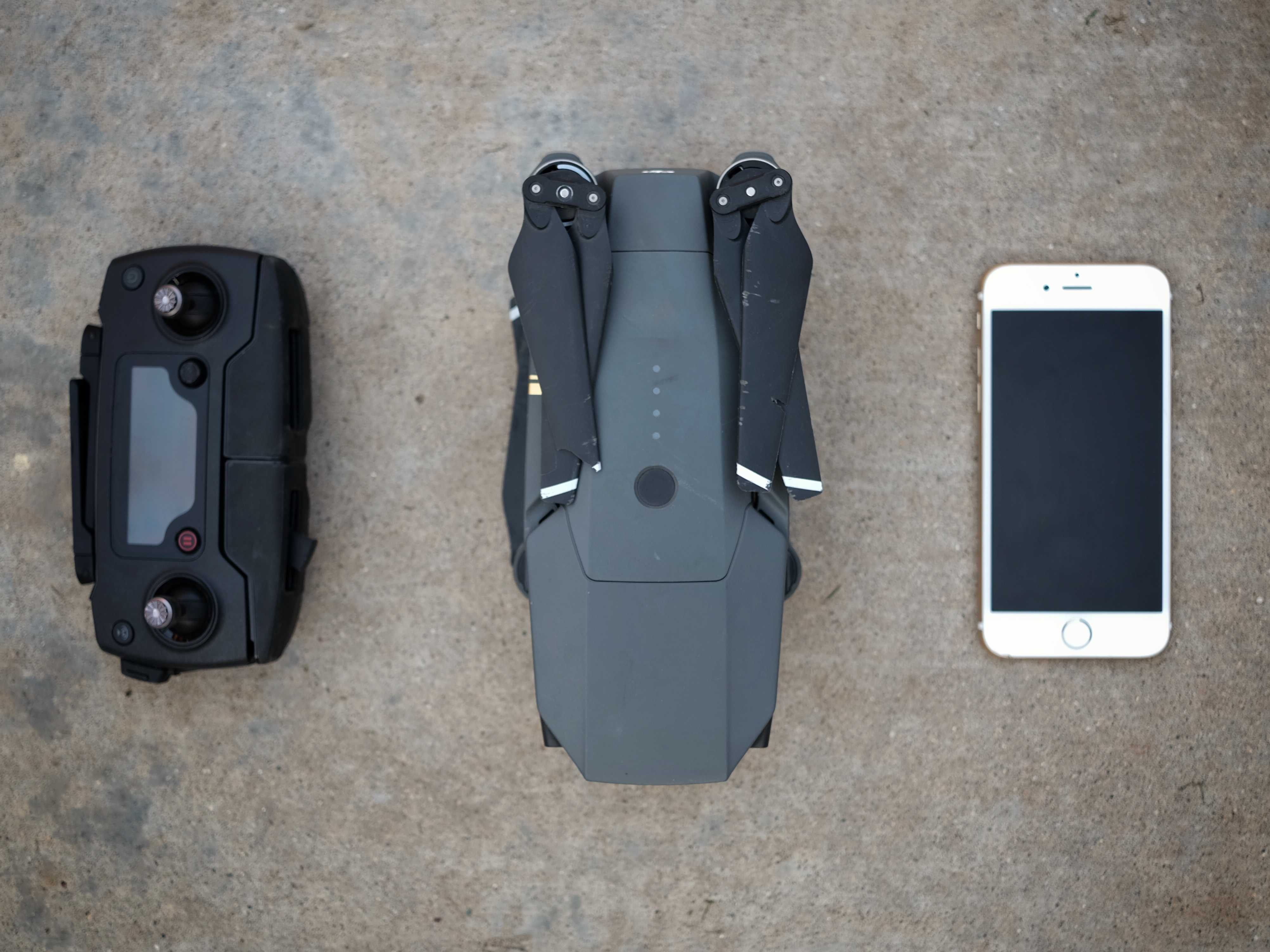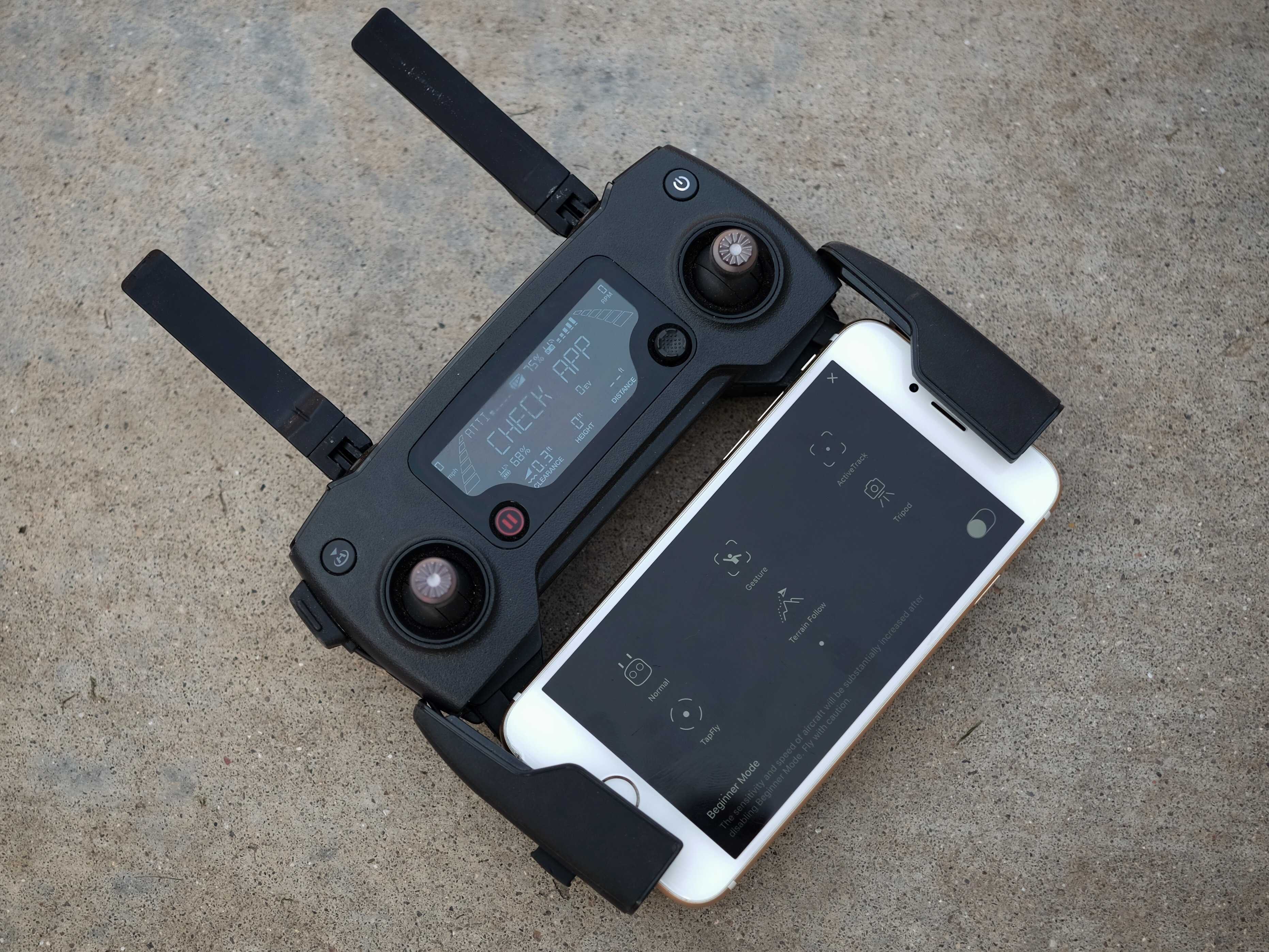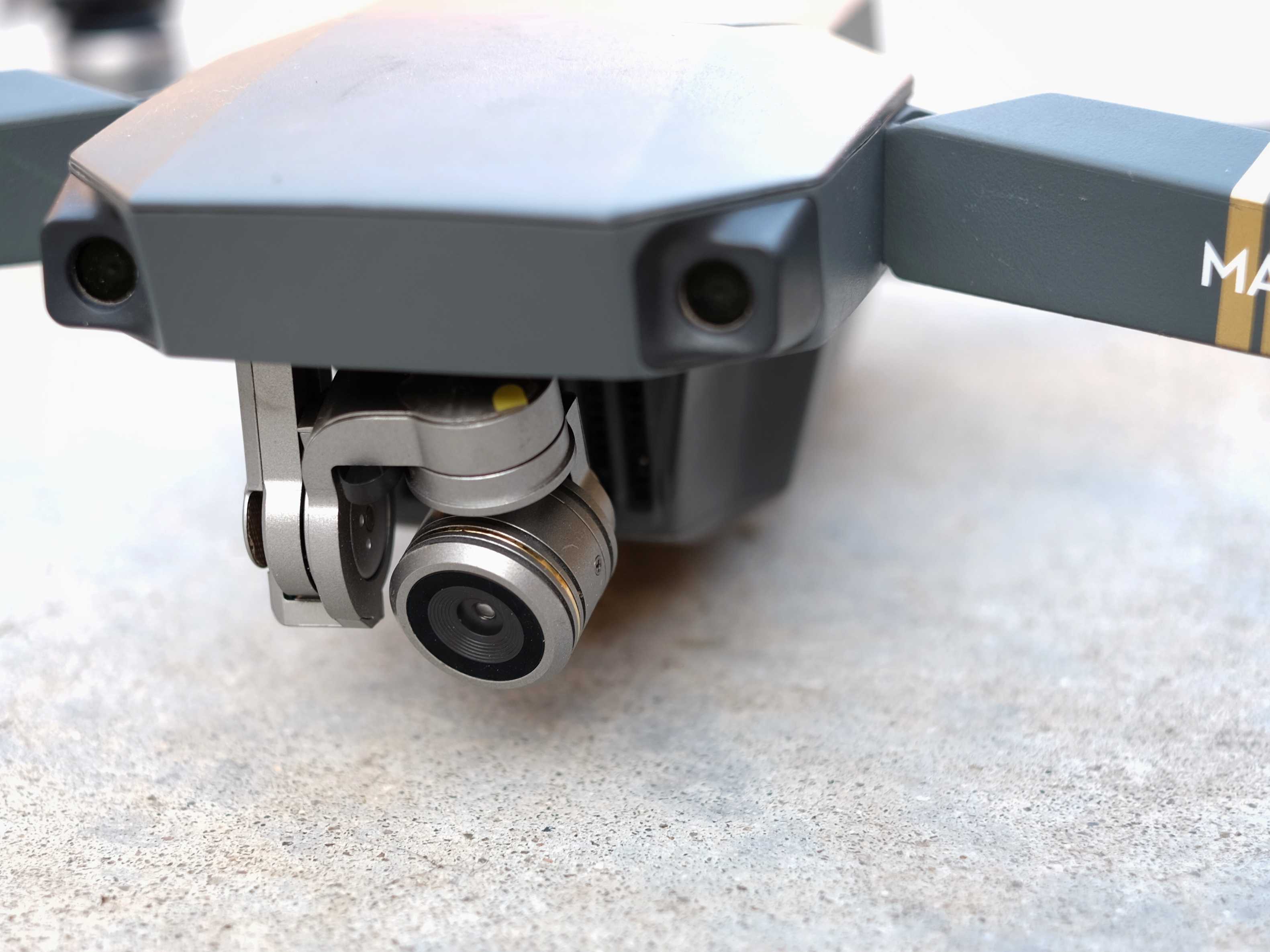Tiny cameras that can fly still seemed like a sci-fi dream just five years ago, but with DJI’s new Mavic Pro drone, the future has arrived ahead of schedule.
When it comes to drones, no company is killing it right now more than DJI, and the Mavic Pro is its most amazing achievement yet. Yes, some drones fly faster and shoot better video, but the Mavic Pro is the ultimate drone for people who love photography, flight and the outdoors but don’t want to be weighed down.
Best of all, you don’t need to be a practice drone pilot or tech nerd to have a blast with the Mavic Pro. Here’s why it’s our favorite drone ever.
This post contains affiliate links. Cult of Mac may earn a commission when you use our links to buy items.
Futuristic design

Photo: Buster Hein/Cult of Mac
With the amazingly compact design of the Mavic Pro, DJI has brought some simple innovations to the droning arena that are total game changers. The front and back legs fold into the body. The camera is located on the nose of the craft, instead of below it like on the Phantom 4. This allows the drone to have a very small footprint for ultra-portability.
When taking the Mavic out, it looks like something out of Star Trek. It’s so small I just put it in a fanny pack. Sure, wearing a fanny pack hasn’t been cool for like 30 years, but once people see what you’re packing in the fanny, you’re instantly cooler than The Rock.
I love hiking but don’t like lugging around a ton of gear, so the portability of the Mavic Pro is a huge plus. A couple of weeks ago I hiked down to the Havasupai Indian Reservation in the Grand Canyon with it and barely noticed it in my pack. When I did want to use it, the Mavic Pro was ready to fly in minutes. It captured some incredible footage of one of the most magical places in the world.
The Mavic’s top legs fold out to the front. You pull the bottom legs down so they extend to the back. Power on the drone, connect your iPhone to the controller, and the Mavic Pro is ready for flight. The only way it could be easier is if you just pressed the power button and the legs popped out. I wouldn’t be surprised if that feature comes in the future.
Anytime someone new sees me pull out the Mavic, they freak out with excitement. Even if you’ve never thought about buying a drone, seeing this drone in action will have you sold. I haven’t seen a gadget elicit this much response since the original iPhone. It’s so ridiculously cool I still get a buzz of childlike wonder every time I hit the skies.
Flight made easy

Photo: Buster Hein/Cult of Mac
Flying a $1,000 camera through the air is a nerve-wracking experience at first. I’m a blundering klutz who’s prone to breaking a new gadget every weekend. I’ve attempted to fly a few cheap drones before — it was always a disaster. I was certain I’d probably crash the Mavic on its first flight but it turned out to be the simplest drone I’ve ever flown.
Don’t worry if you’ve never done it before: Anyone can fly the DJI Mavic Pro.
Thanks to a built-in GPS sensor, the drone only goes where you want it to. It locks onto a spot and hovers in place until you move the joysticks. Unlike other small drones, it doesn’t drift from its spot unless you tell it to.
Once the Mavic is up, zooming through the air feels like playing a video game. You can use several flight modes to automate the drone’s movement so you can focus on manning the camera.
The drone packs a sonar sensor on the bottom so it won’t crash into the ground. Two obstacle-avoidance sensors, located at the front, prevent you from smashing into trees or other buildings when flying forward. Unfortunately, obstacle avoidance only works when flying forward. Hopefully future versions will gain this capability in more directions.
After a couple of flights, I’ve already gotten to the point where I can zip the Mavic around a landscape without relying on the screen — unless it travels too far away for the eye to see, which is pretty easy to do because this thing is tiny.
Superb software

Photo: Buster Hein/Cult of Mac
What sets the Mavic apart from all its competitors is the software powering it. Flying wouldn’t be nearly as easy if it weren’t for the sophisticated tech working behind the scenes to make flight feel carefree.
Packed inside the Mavic’s tiny body are 24 processing cores, GPS and GLONAS sensors, five cameras, two ultrasonic range finders and some redundant sensors thrown in to be extra safe. All that fancy tech means you pretty much don’t have to touch the joysticks to fly.
DJI’s iOS app comes with a number of intelligent flight modes that help you capture amazing video. TapFly is one of my favorites. Simply tap on the screen where you want Mavic to fly, then press go, and the drone automatically heads where you want.
There’s also an Active Track mode that can be used to automatically follow people. Subjects don’t even need to hold the controller to be tracked (as with some other drones). Gestures mode lets you take selfies by waving at the Mavic. Additional modes include Course Lock, Home Lock, Follow Me, Waypoints and Point of Interest, which makes the Mavic orbit 360 degrees around a subject.
With the iOS app integrated into the drone’s controller, the Mavic Pro tracks exactly how much flight time you have left. Once you hit 20 percent battery, the controller beeps incessantly to remind you to return home. The battery usually lasts around 25 minutes, depending on wind conditions.
Return Home mode helps make sure you never lose the Mavic. If your battery becomes critically drained, the drone automatically returns to its home point and lands autonomously. Just make sure your home point is updated before taking off, or you’ll have to pilot the Mavic back manually.
Mavic Pro repairability
Despite how hard DJI made it to crash the Mavic Pro, I did it. The good news is, the Mavic is as tough as Mighty Mouse.
While cruising above Camelback Mountain in Phoenix, I flew the drone around a cliff and out of my line of sight (a big no-no). The camera feed cut out, and the Mavic automatically entered into Return Mode after a few seconds. Unfortunately, on its way back home, my Mavic’s obstacle-avoidance sensors didn’t pick up the giant cliff to its right. It ran into the rock wall, but managed to stay in the air and fly home with two damaged propellers. One of the obstacle-avoidance sensors was damaged in the crash, as was the camera gimbal, but the drone remained flight-worthy.
Getting your Mavic repaired by DJI is nearly as simple as taking your busted iPhone to the Genius Bar. I shipped my broken drone to DJI’s repair center; two weeks later, they sent it back in perfect working order. Repair costs were waived because the drone’s obstacle-avoidance system failed.
If you do break your drone out of warranty, repair costs are pretty affordable compared to the total cost of the drone. DJI also offers something similar to AppleCare+. You pay $99 for DJI Care, and the company will fix your drone at significantly cheaper rates if you accidentally crash it.
The camera

Photo: Buster Hein/Cult of Mac
For a drone as small and easy to use as the Mavic Pro, the camera quality is pretty amazing. It’s not DSLR-quality. It’s more like having a flying iPhone camera, and that’s all most people need now.
Mavic Pro can snap 12-megapixel photos in RAW DNG or JPEG files. I prefer shooting DNG because you can pull out more details in post-processing. Most cameras on drones this small look like they came from a flying potato, but Mavic’s camera has thoroughly impressed me. It’s the same camera sensor DJI on its more expensive Phantom 4 drone, except the field of vision isn’t as wide on the Mavic Pro.
Shooting video is where the Mavic really shines. The colors look great straight off the camera. You can shoot in 4K or 1080p at a couple of different frame rates. All of the exposure settings can be set manually, too, so you can control every aspect of the shot.
Should you get a DJI Mavic Pro drone?
Hell yes! The only drawback of the Mavic Pro might be its $1,000 price tag. Considering you’re basically getting all the best aspects of the pricier Phantom 4 in a smaller form factor, it’s actually a great buy.
Even if you’re not sure what you’ll use the Mavic Pro for, if you love gadgets, technology and photography, you will love flying the this drone. It motivates me to get out and explore more, and gives me a way to see the world from an all-new angle. The Mavic Pro is the first device that is so easy and approachable, it feels destined to make droning mainstream.
DJI provided Cult of Mac with a review unit for this article. See Cult of Mac’s reviews policy and check out more stuff we recommend in our Best List reviews.
![Mavic Pro: The coolest gadget since the original iPhone [Reviews] Mavic Pro](https://www.cultofmac.com/wp-content/uploads/2017/01/mavic-pro-drone-dji.jpg)

